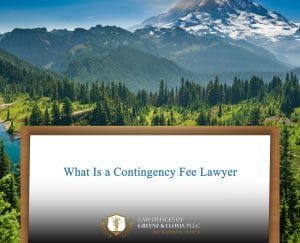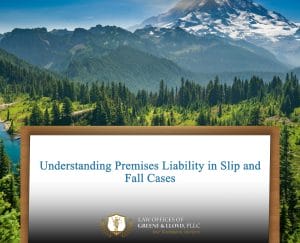## Understanding the Factors Behind Spinal Cord Injuries
Spinal cord injury causes encompass a range of factors that significantly impact individuals and their families. Among the most common causes are automobile accidents, falls, and sports-related injuries. These incidents can lead to varying degrees of injury, from temporary impairment to complete paralysis. Understanding these causes is vital for identifying risks and implementing safety measures, ultimately minimizing the occurrence of these life-altering injuries. By exploring the factors contributing to spinal cord injuries, we lay the groundwork for legal considerations in personal injury cases where negligence or reckless behavior may be involved.
Key takeaway: Recognizing the diverse causes behind spinal cord injuries enables individuals and legal professionals to navigate the complex landscape of prevention and accountability.
## The Definition and Impact of Spinal Cord Injury Causes
Spinal cord injury causes refer to the events or actions that lead to damage to the spinal cord, which is responsible for transmitting signals between the brain and the rest of the body. When an injury occurs, it can disrupt this communication and result in loss of mobility or sensation, fundamentally altering a person’s life. The spinal cord is a delicate structure, and any traumatic impact can lead to long-term disability. This often requires extensive medical treatment, rehabilitation, and ongoing care, which can be financially burdensome for individuals and families.
In the context of the legal field, understanding these causes assists attorneys in evaluating potential claims arising from negligence or malpractice associated with these injuries. Legal representation can play a crucial role when pursuing compensation for medical expenses, lost wages, and emotional distress linked to spinal cord injuries. Being aware of the causes helps in assessing liability, allowing clients to receive fair compensation for their suffering.
Effectively identifying spinal cord injury causes not only aids legal representation but also fosters awareness and education regarding safety measures that can mitigate these risks, promoting public health.
## Importance of Awareness Around Spinal Cord Injury Causes
Examining the causes of spinal cord injuries is paramount, as it informs individuals and communities about potential dangers in their environments. Public education initiatives can assist in reducing the incidence of these injuries. For instance, campaigns focused on safe driving practices can help mitigate the risks associated with vehicle accidents, which are one of the leading causes of spinal cord injuries. Similarly, promoting safety measures in sports and recreational activities can reduce the prevalence of injuries during participation.
In addition, understanding the context behind spinal cord injuries can empower individuals to take proactive measures in their lives. From using seat belts while driving to employing proper techniques in sports, awareness leads to safer choices. This may also encompass advocacy for laws and regulations that enhance public safety standards, thereby fostering a culture of responsibility that can lead to diminished injury rates.
Within the legal community, an awareness of these injury causes plays a vital role in determining the merits of a case. Addressing causation helps attorneys establish the elements needed to prove negligence or liability when representing clients seeking compensation for their injuries.
## The Legal Framework Surrounding Spinal Cord Injury Causes
The legal landscape surrounding spinal cord injury causes covers various statutes and regulations designed to protect individuals from harm. Personal injury law often plays a fundamental role, as individuals may seek compensation for injuries sustained due to another party’s negligence or intentional actions. This could involve vehicular accidents, workplace hazards, or unsafe property conditions. Understanding these legal frameworks is essential for attorneys working on behalf of clients suffering from spinal cord injuries.
In Washington State, the law allows victims to file a personal injury claim to seek damages for medical expenses, pain and suffering, and lost wages. However, proving these claims typically requires a comprehensive understanding of causation and liability, demanding thorough investigation and qualified representation. Knowledge of local statutes, as well as precedented cases, can enhance an attorney’s ability to navigate through complex legal claims and achieve favorable outcomes for their clients.
Moreover, advocating for legislative changes in the aftermath of notable spinal cord injury cases can contribute to developing better safety standards and regulations. As laws evolve to reflect new understandings of injury prevention, legal professionals have the opportunity to shape a safer environment for all citizens.
## Real-Life Cases Highlighting Spinal Cord Injury Causes
Real-world examples of spinal cord injury causes serve as poignant reminders of the severe consequences that can arise from daily activities. Take, for instance, a car accident where a driver’s negligence leads to a crash. In such cases, the injured party may experience a complete loss of mobility, resulting in a life-altering spinal cord injury. Complications from these incidents can ripple through all aspects of life, impacting work, family dynamics, and emotional well-being.
Consider also the case of an athlete in a contact sport who suffers a spinal cord injury due to inadequate protective equipment or poorly enforced safety rules. Such situations underscore the importance of adhering to safety protocols, and the need for organizations to prioritize athlete welfare. They also create opportunities for legal challenges against individuals or institutions that neglect their duty of care towards others, thereby contributing to spinal cord injury causes.
Examining these real-life cases not only highlights the tragic outcomes associated with spinal cord injuries but also reflects the necessity of legal advocacy. Attorneys can play a crucial role in addressing the negligence that leads to these injuries, supporting victims in rebuilding their lives while holding responsible parties accountable for their actions.
## Essential Steps for Prevention of Spinal Cord Injuries
Taking proactive steps to prevent spinal cord injuries is crucial for ensuring safety in various environments. For individuals, understanding and mitigating risk factors play a significant role. Implementing safety measures, such as wearing seat belts in vehicles, using helmets during sports, and adhering to safety guidelines in the workplace, can significantly reduce the likelihood of spinal cord injuries. Education on recognizing potential hazards in everyday situations can foster a more thoughtful and cautious approach to personal safety.
Employers and organizations also have an essential role in preventing spinal cord injuries. By providing safety training, promoting a culture of safety, and maintaining equipment properly, they can minimize risks for employees and participants. Regular assessments of potential hazards, coupled with effective communication regarding safe practices, can enhance workplace safety and reduce injury occurrence.
Legal professionals can also advocate for stronger regulations that enforce safety standards in industries prone to spinal cord injuries. By partnering with lawmakers and community organizations, attorneys can influence changes that prioritize public safety, thereby creating a more protective legal environment for individuals.
## Common Mistakes to Avoid Regarding Spinal Cord Injury Cases
Navigating spinal cord injury claims can be complex, and individuals often make critical mistakes that can hinder their ability to secure compensation. One frequent mistake is waiting too long to seek legal counsel. Timely intervention is vital as it allows attorneys to gather evidence effectively, consult with experts, and meet the strict deadlines set by the law. Delayed legal action can lead to a weakened case, making it more challenging to obtain just compensation for injuries.
Another common pitfall is failing to document medical treatments and the impact of the injury on one’s daily life. A comprehensive record of medical visits, treatment plans, rehabilitation efforts, and emotional struggles forms the backbone of any successful claim. Without this documentation, establishing a connection between the injury and its consequences can become increasingly difficult, thereby jeopardizing the chances of recovery.
Lastly, miscommunicating or providing inconsistent information during legal proceedings can lead to complications. Being truthful and consistent in statements is crucial when presenting a case—this extends to interactions with medical professionals or insurance representatives as well. Individuals should be aware that any discrepancies can be exploited by opposing legal teams, undermining the credibility of their claims.
## When It’s Necessary to Seek Legal Assistance
Recognizing when to consult an attorney regarding spinal cord injury claims is critical for achieving a favorable outcome. Initially, individuals should reach out to legal professionals when facing substantial medical expenses or potential long-term care needs due to a spinal cord injury. These costs can accumulate rapidly, and enlisting an attorney can facilitate navigating the maze of insurance claims and financial liability maximization.
Additionally, if an individual experiences difficulty obtaining compensation from insurance companies, it is advisable to seek legal help. Insurance companies often employ tactics designed to minimize payouts; understanding these strategies and effectively countering them necessitates skilled legal representation. Experienced attorneys can negotiate with insurers on behalf of their clients, ensuring their rights are upheld and fair compensation is pursued.
Lastly, when there is ambiguity regarding the cause of the injury or multiple parties may be liable, consulting an attorney is essential. Legal professionals can investigate the circumstances thoroughly, gathering evidence to establish liability and bolster the claim’s foundation.
## The Advantages of Legal Representation in Spinal Cord Injury Cases
Engaging legal representation offers numerous advantages for individuals pursuing spinal cord injury claims. First and foremost, attorneys can provide invaluable guidance throughout the entire legal process. From understanding complex legal terms to navigating the intricacies of personal injury laws, their experience aids clients in making informed decisions. This support instills confidence in clients, as they feel empowered by having knowledgeable advocates by their side.
Moreover, legal professionals possess the tools and resources necessary to investigate claims thoroughly. This often includes consulting with medical experts, accident reconstruction professionals, or safety specialists to bolster a case. Such evidence can strengthen the argument for compensation, increasing the likelihood of a favorable settlement or verdict. Attorneys are adept at evaluating damage claims, ensuring that clients pursue compensation that accurately reflects their needs and losses.
Additionally, skilled legal representation aids in negotiation with insurance companies. Attorneys understand the tactics used by insurers to minimize payouts and are equipped to counter these strategies effectively. The knowledge and negotiation skills that lawyers possess often lead to more substantial settlements than individuals could secure on their own, ensuring that clients receive the compensation they deserve for their spinal cord injuries.
## How Law Offices of Greene & Lloyd, PLLC Can Assist You
At the Law Offices of Greene & Lloyd, PLLC, we bring extensive experience and dedication to represent individuals impacted by spinal cord injuries throughout Washington State. Our team of legal professionals is committed to providing personalized attention, thoroughly assessing each case to develop a tailored legal strategy. We understand that every spinal cord injury case is unique and requires careful attention to detail. Our approach involves collaborating closely with clients, ensuring open communication and understanding of their specific needs.
Our firm excels in gathering evidence to establish liability and damages, working with medical experts, and utilizing our extensive knowledge of Washington State personal injury laws. We are committed to advocating for the rights of our clients, particularly when navigating insurance claims and negotiating settlements. By leveraging our experience, we strive to protect our clients’ interests and secure the compensation they deserve.
Furthermore, we prioritize education and resources for our clients, empowering them to make informed decisions regarding their cases. Our dedication extends beyond achieving favorable outcomes; we aim to foster understanding and awareness of spinal cord injury causes and your rights as a victim.
## Frequently Asked Questions About Spinal Cord Injury Causes
## Additional Resources for Understanding Spinal Cord Injury Causes
To truly grasp spinal cord injury causes and their implications, individuals can benefit from a range of resources. Reputable organizations such as the National Spinal Cord Injury Statistical Center provide research and statistics related to spinal cord injuries, shedding light on prevalence, causes, and recovery outcomes. Such data can enhance understanding and awareness within the community, leading to improved safety standards and practices.
Furthermore, state-specific resources, including local hospital programs or rehabilitation centers, are invaluable. These resources can offer insights into the latest treatments and rehabilitation methods available to individuals with spinal cord injuries. Connecting with support organizations can also provide emotional assistance, allowing victims and their families to share experiences and access counseling services.
Legal resources, such as information from law offices and personal injury associations, provide guidance on navigating the legal aspects of spinal cord injury claims. Legal professionals often create informative blogs or articles that outline important steps, timelines, and legal rights—serving as valuable educational materials.




